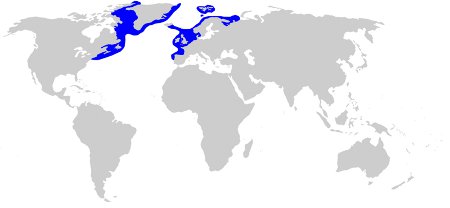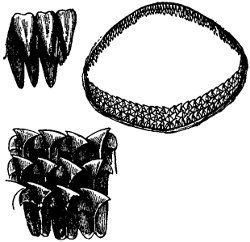The Greenland Shark
A Giant of the Depths
|
I don't know what it is about the Greenland shark, and you can call me crazy, but every time I see one I just want to hug it. I'd absolutely love the privilege of diving with this amazing creature but, lucky for the shark, I have a strong aversion to cold water. This is a very slow growing shark and researchers believe it can live to be 200 years old. Imagine the stories it could tell if it could speak. A member of the Sleeper shark family, it's known to be sluggish and slow moving. |
|
They were once thought to be capable of an impressive turn of speed when going after fast prey, but scientists now believe they may prey on sleeping seals rather than giving chase.
Size
These are large sharks averaging between 250 and 450cm, though they have been known to reach lengths of over 6m. Pups are around 40cm at birth.
Colouring
Grey or brown in colour, they have few clearly distinguishing markings, though some have small darker and slighter spots and patches.
Fins
The first and second dorsal fins are equal in size, small, low and have no spines. There's no anal fin present. The caudal fin is broad with a longer upper lobe. Pectoral and pelvic fins are relatively small.
Teeth
Small needle-like teeth in the upper jaw and larger, wider teeth with bent cusps on the lower jaw.
Diet
This shark enjoys a varied diet and is an opportunistic scavenger as well as a hunter. Stomach contents have shown it to eat the carcasses of drowned horses and reindeer. It's also known to be cannibalistic.
Many of these sharks are totally blind because of a copepod parasite, Ommatokoita elongata, which attaches itself to the cornea of the shark's eye. There has been speculation that this parasite may be bioluminescent and lure prey close to the mouth of the shark.
Due to the very poor visibility in the waters the sharks inhabit, this blindness doesn't interfere with their ability to find food. They have an excellent sense of smell and use this to find food.
Reproduction
They are ovoviviparous but little is known about the breeding cycle of these sharks. The gestation period is unknown and they are thought to give birth to litters of up to 10 pups at a time.
Distribution
Named after the place it was first discovered, the Greenland shark likes cold water and is found further north than any other species of shark. It ranges from the chilly north Atlantic to as far south as the Gulf of St Lawrence.
It prefers water temperatures of between 0.6 and -12ºC and will retreat to depths of around 180 to 550m when water temperatures rise. It has been known to go to depths of over 1200m, but is also found in shallower waters in bays and river mouths in the Arctic winter.
Greenland Shark Distribution Map

Return to Sleeper Sharks from Greenland Shark
Classification
Phylum: Chordata
Class: Chondrichthyes
Subclass: Elsamobranchii
Order: Squaliformes
Family: Somniosidae
Genus: Somniosus
Species: microcephalus

Greenland Shark Teeth
Recent Articles
-
Thresher Sharks
Aug 27, 14 10:51 AM
Thresher sharks are unmistakable with that huge upper lobe on the caudal fin. Let's find out more about them. -
Sharkwater
Aug 14, 14 12:42 PM
Sharkwater is a documentary by Rob Stewart highlighting the plight of the sharks in our oceans. -
Natural Cleaners
Aug 13, 14 08:57 AM
Natural cleaners and homemade skincare products are not only better for the environment, they're better for you and your family.
